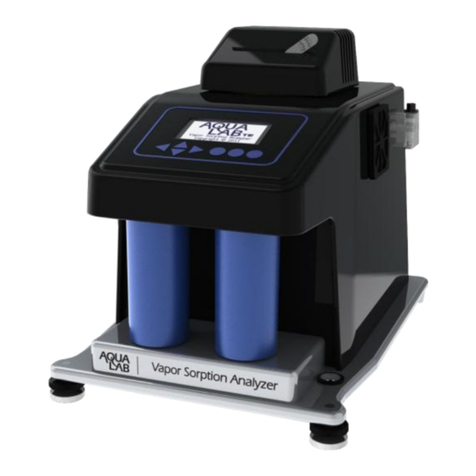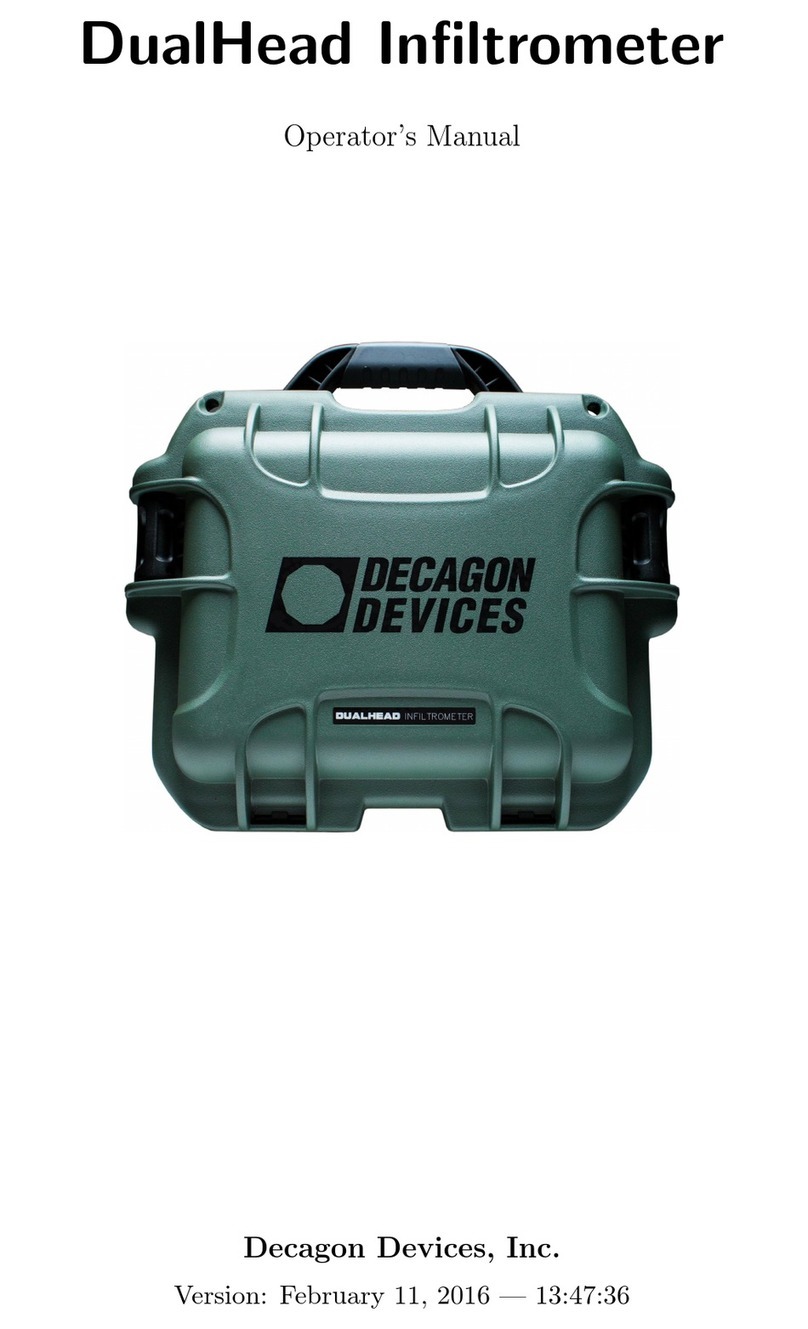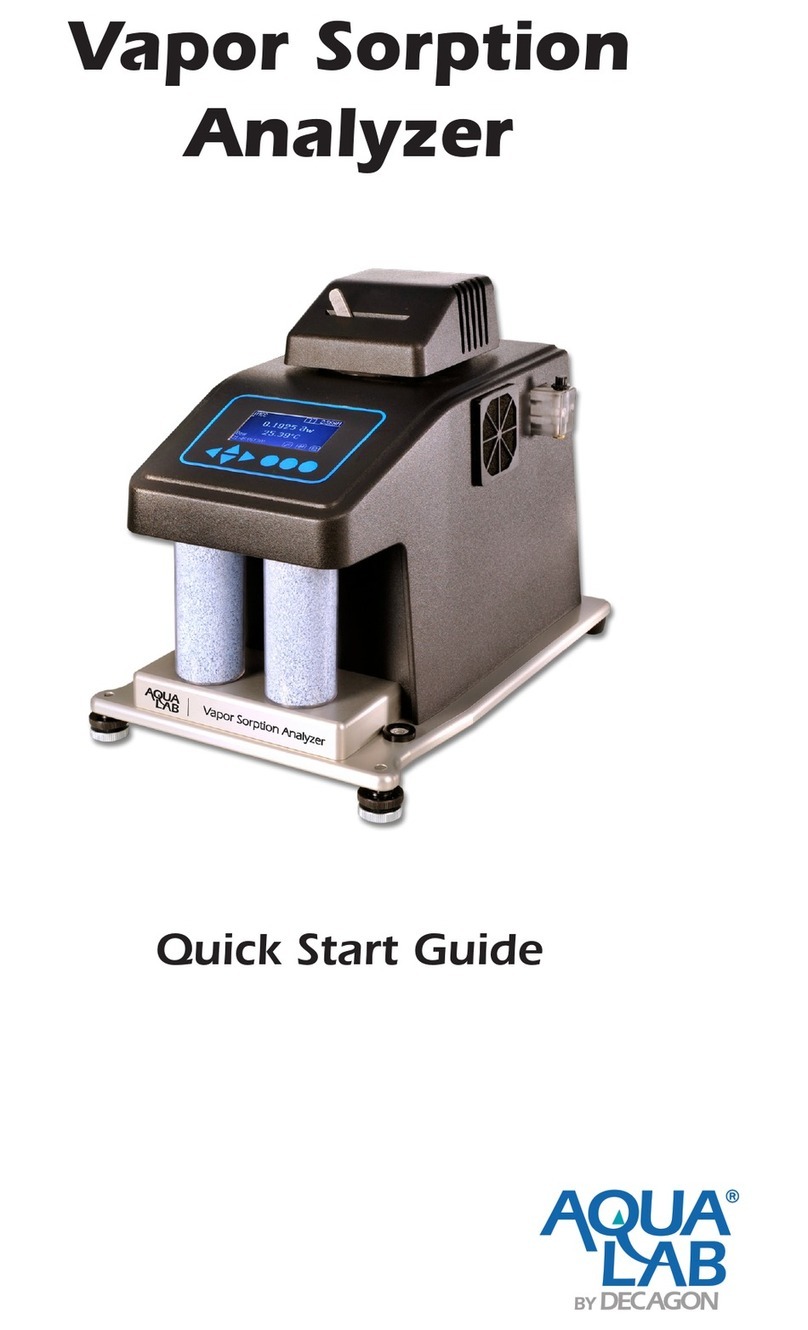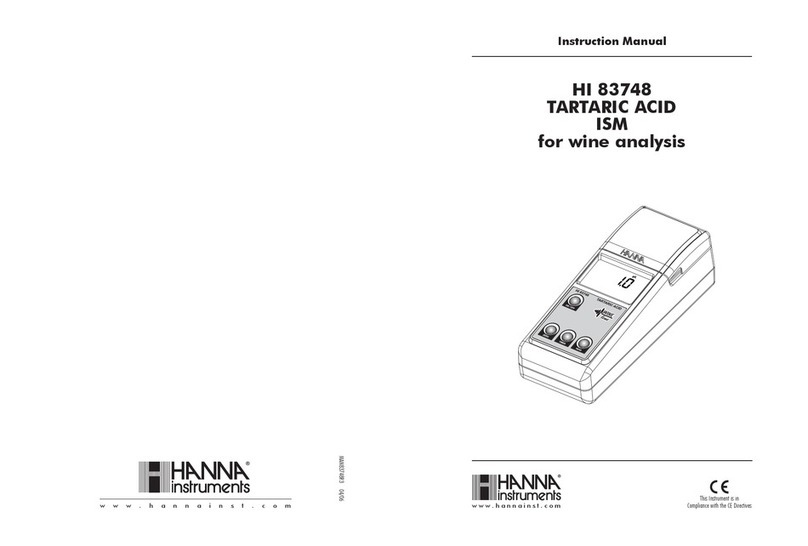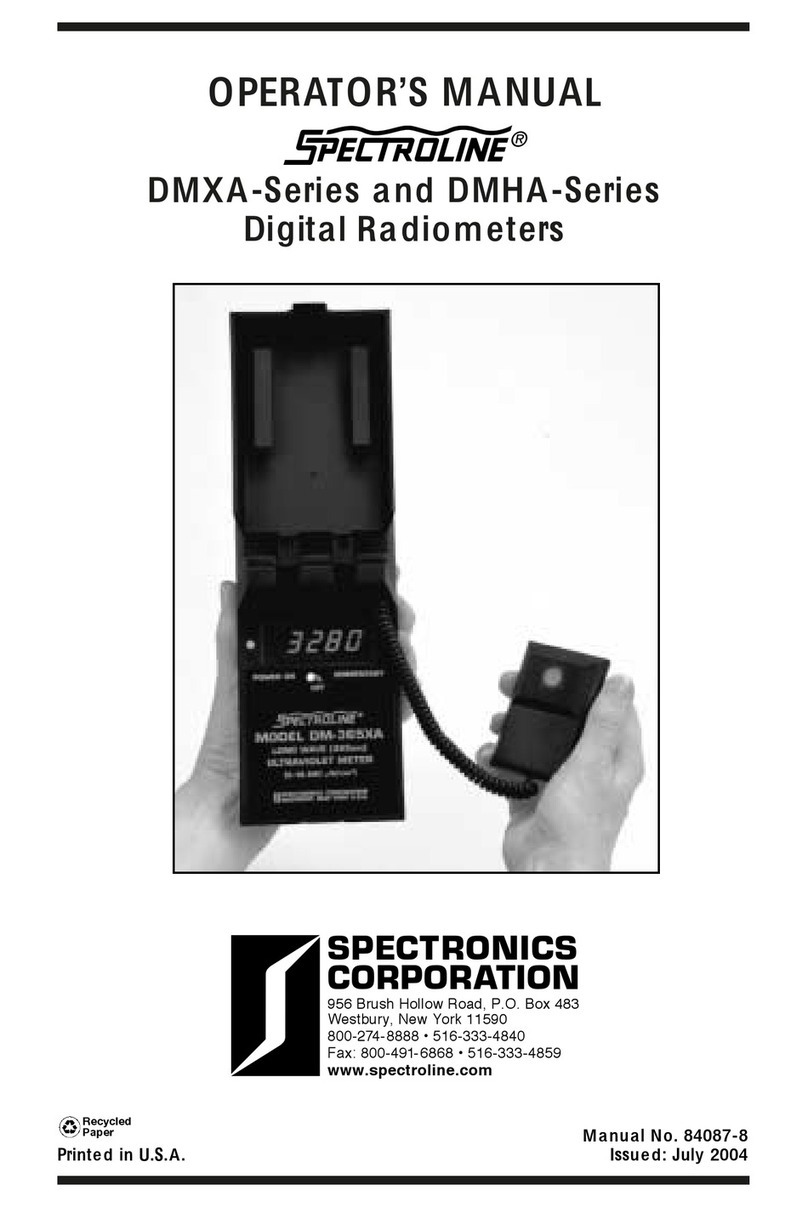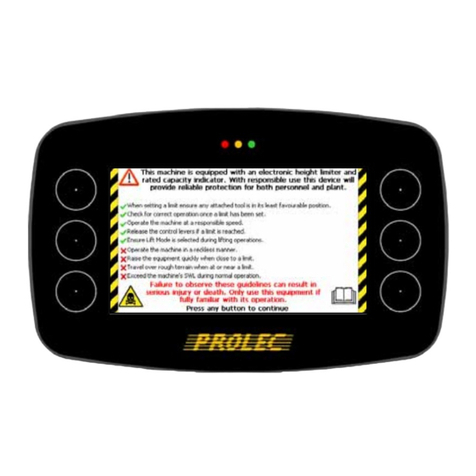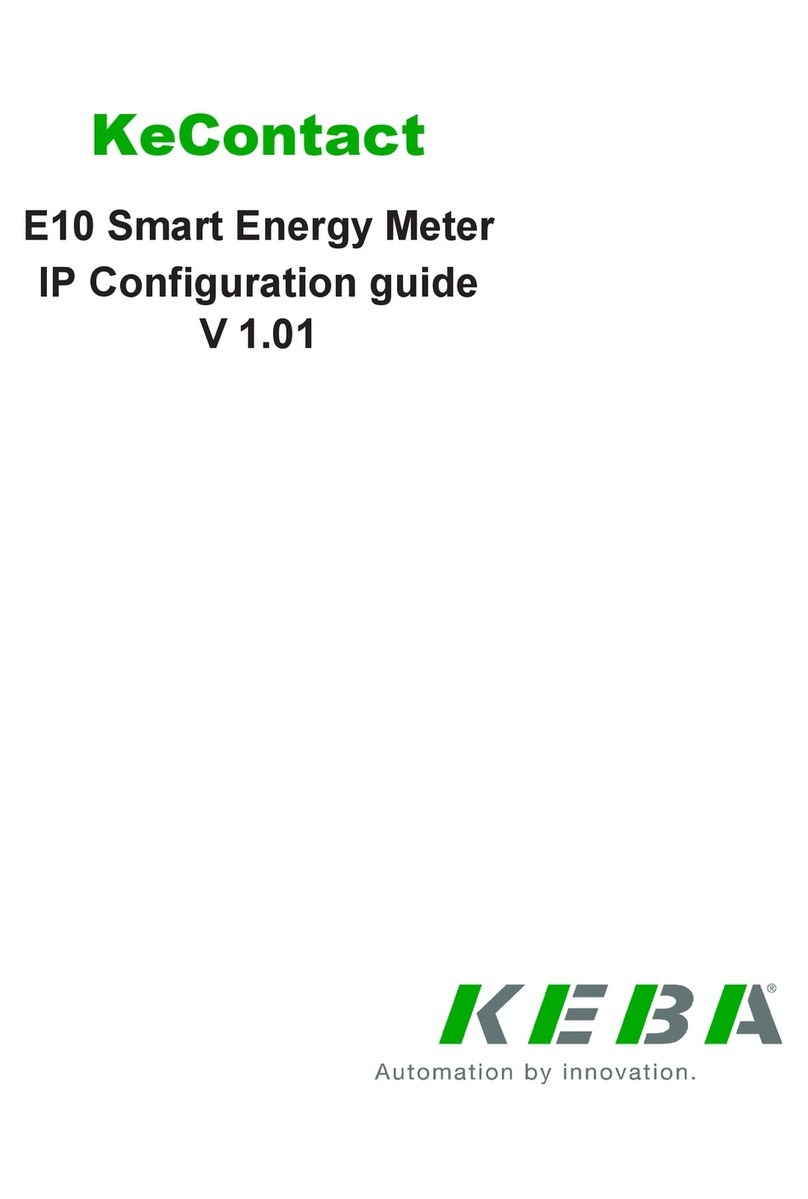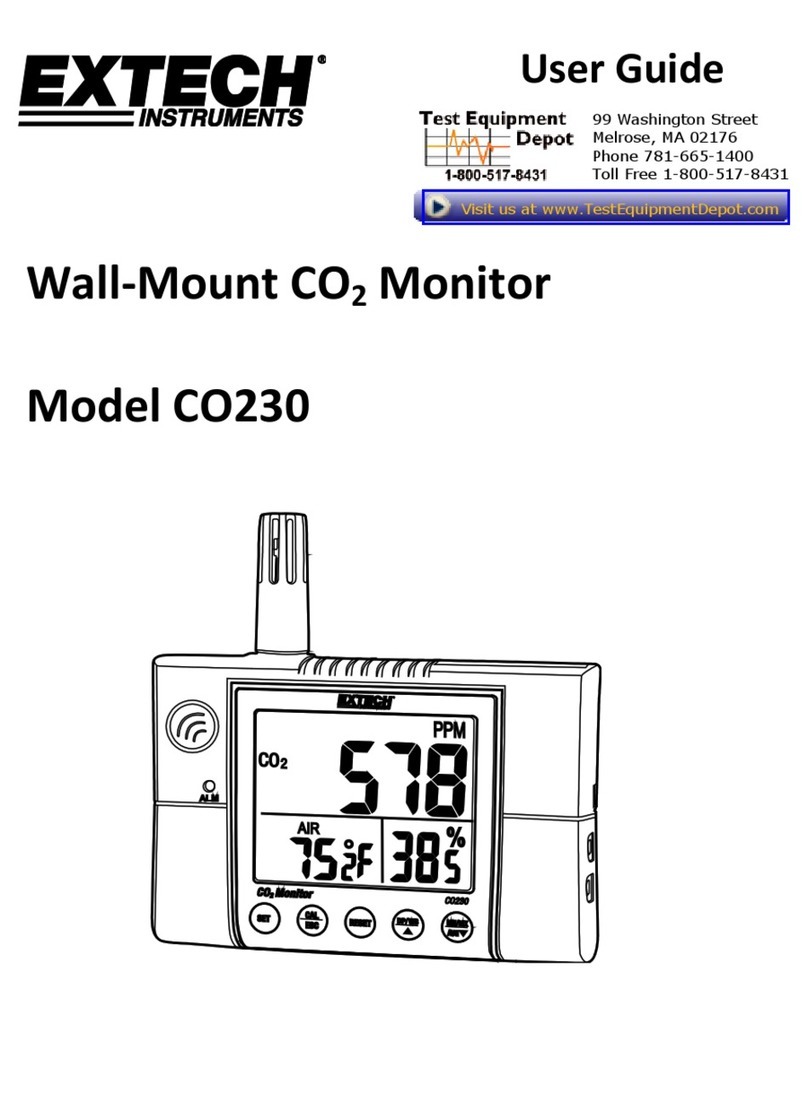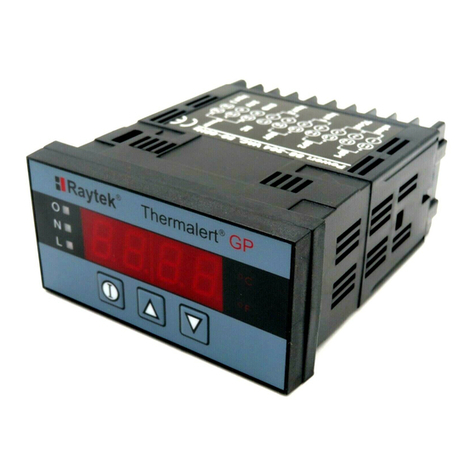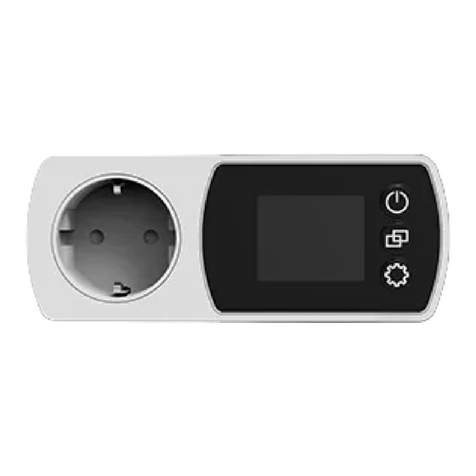Decagon WP4-T User manual

WP4
Dewpoint PotentiaMeter
for models WP4 and WP4-T
Operator’s Manual
Ve r s i o n 2 . 1
Decagon Devices, Inc.

Decagon Devices, Inc.
950 NE Nelson Court
Pullman WA 99163
tel: (509) 332-2756
fax: (509) 332-5158
www.decagon.com/wp4
Trademarks
“WP4 Dewpoint PotentiaMeter” is a
registered trademark of Decagon Devices, Inc.
©1998-2003 Decagon Devices, Inc., All rights reserved.

WP4PotentiaMeter
Table of Contents
i
Contents
1. Introduction . . . . . . . . . . . . . . . . . . . . . . . . 1
About this Manual . . . . . . . . . . . . . . . . . . . . . . . . . . . . . . .1
Customer Service . . . . . . . . . . . . . . . . . . . . . . . . . . . . . . . .1
Warranty . . . . . . . . . . . . . . . . . . . . . . . . . . . . . . . . . . . . . . . . .2
Note to our WP4 Users . . . . . . . . . . . . . . . . . . . . . . . . . .3
Seller’s Liability . . . . . . . . . . . . . . . . . . . . . . . . . . . . . . . . . .3
2. About the WP4 . . . . . . . . . . . . . . . . . . . . 5
WP4 Models and Options . . . . . . . . . . . . . . . . . . . . . .5
WP4 and Water Potential . . . . . . . . . . . . . . . . . . . . . . .5
How the WP4 works . . . . . . . . . . . . . . . . . . . . . . . . . . . .6
WP4 and Temperature . . . . . . . . . . . . . . . . . . . . . . . . . .7
3. Getting Started . . . . . . . . . . . . . . . . . . . 10
Components of your WP4 . . . . . . . . . . . . . . . . . . . . . . .10
Choosing a Location . . . . . . . . . . . . . . . . . . . . . . . . . . . . .10
Features . . . . . . . . . . . . . . . . . . . . . . . . . . . . . . . . . . . . . . . . . .11
Preparing the WP4 for Operation . . . . . . . . . . . . . .12
Portability . . . . . . . . . . . . . . . . . . . . . . . . . . . . . . . . . . . . . . . .13
4. The Menus . . . . . . . . . . . . . . . . . . . . . . . . . 15
The Main Menu . . . . . . . . . . . . . . . . . . . . . . . . . . . . . . . . . . .15
Changing Languages . . . . . . . . . . . . . . . . . . . . . . . . . . . . .16
Normal sampling mode . . . . . . . . . . . . . . . . . . . . . . . . . .16
Continuous mode . . . . . . . . . . . . . . . . . . . . . . . . . . . . . . . .17
System configuration . . . . . . . . . . . . . . . . . . . . . . . . . . . .18
Sample Equilibration Screen . . . . . . . . . . . . . . . . . . . . .23
5. Calibration and Verification . . . . 25
Verification . . . . . . . . . . . . . . . . . . . . . . . . . . . . . . . . . . . . . .25
Verification Standards . . . . . . . . . . . . . . . . . . . . . . . . . .25

WP4PotentiaMeter
Table of Contents
ii
When to Verify Calibration . . . . . . . . . . . . . . . . . . . . .26
How to Verify and Calibrate the WP4 . . . . . . . . .27
6. Sample Preparation . . . . . . . . . . . . . . 31
Preparing the Sample . . . . . . . . . . . . . . . . . . . . . . . . . . . .31
Dry Samples . . . . . . . . . . . . . . . . . . . . . . . . . . . . . . . . . . . . . .32
Samples and Temperature . . . . . . . . . . . . . . . . . . . . . . .33
7. Taking a Reading . . . . . . . . . . . . . . . . 36
How WP4 takes Readings . . . . . . . . . . . . . . . . . . . . . . .37
Cautions . . . . . . . . . . . . . . . . . . . . . . . . . . . . . . . . . . . . . . . . . .37
Increasing your Accuracy . . . . . . . . . . . . . . . . . . . . . . .39
8. Computer Interface . . . . . . . . . . . . . . . 41
Using Hyperterminal in Windows 98
and Windows 2000 . . . . . . . . . . . . . . . . . . . . . . . . . . . . .41
9. Theory: Water potential . . . . . . . . 44
Water potential . . . . . . . . . . . . . . . . . . . . . . . . . . . . . . . . . .44
Measuring Water Potential . . . . . . . . . . . . . . . . . . . . .45
Effect of Temperature on Water Potential . . . . . .46
10. Cleaning and Maintenance . . . . . 48
Tools Needed . . . . . . . . . . . . . . . . . . . . . . . . . . . . . . . . . . . .48
Cleaning the Block and Sensors . . . . . . . . . . . . . . . . .49
Checking Calibration . . . . . . . . . . . . . . . . . . . . . . . . . . . .52
11. Repair Instructions . . . . . . . . . . . . . . . 53
Shipping Directions . . . . . . . . . . . . . . . . . . . . . . . . . . . . . .53
Repair Costs . . . . . . . . . . . . . . . . . . . . . . . . . . . . . . . . . . . . . .55
Loaner Service . . . . . . . . . . . . . . . . . . . . . . . . . . . . . . . . . . .55
12. Troubleshooting . . . . . . . . . . . . . . . . . . 56
Problems and Solutions . . . . . . . . . . . . . . . . . . . . . . . . . .56

WP4PotentiaMeter
Table of Contents
iii
Component Performance Screen . . . . . . . . . . . . . . . .63
13. Further Reading . . . . . . . . . . . . . . . . . . 65
References: . . . . . . . . . . . . . . . . . . . . . . . . . . . . . . . . . . . . . . .65
Application Notes: . . . . . . . . . . . . . . . . . . . . . . . . . . . . . . .66
Appendix A . . . . . . . . . . . . . . . . . . . . . . . . . . 67
Preparing Salt Solution . . . . . . . . . . . . . . . . . . . . . . . . . .67

WP4PotentiaMeter
Table of Contents
iv

WP4PotentiaMeter
Introduction
1
1. Introduction
Welcome to Decagon’s WP4 Dewpoint PotentiaMe-
ter, the research standard for measuring water
potential. WP4 is the fastest, most accurate, and
most reliable instrument available for measuring
water potential using the chilled-mirror dewpoint
technique. Whether you are a scientist or a student,
WP4 will suit your needs. It is easy to use and pro-
vides fast, accurate results. We hope you find this
manual informative and helpful in understanding
how to maximize the capabilities of your WP4.
About this Manual
This manual is for use with the standard model WP4
and the temperature-controlled model WP4-T.
Included in this manual are instructions for setting
up your WP4, calibration, and maintaining and car-
ing for your instrument. Please read these instruc-
tions before operating WP4 to ensure that the
instrument performs to its full potential.
Customer Service
If you ever need assistance with your WP4, or if you
just have questions, there are several ways to con-

WP4PotentiaMeter
Introduction
2
tact us:
Phone:
Our toll-free customer service number is available
to our customers in the US and Canada, Monday
through Friday, between 8 a.m. and 5 p.m. Pacific
time at 1-800-755-2751.
For our customers outside of the US and Canada,
our regular telephone number is (509) 332-2756.
Fax:
Our fax number is (509) 332-5158.When you fax
us, please include your WP4’s serial number, your
name, address, phone and fax number along with a
description of your problem.
E-mail:
If you need technical support, you can send us mes-
please include as part of your message your WP4’s
serial number, your name, address, phone, fax num-
ber, and return e-mail address.
If you have a question about your application with
WP4, please send your message with the above
information to wp4@decagon.com.
Warranty
WP4 has a 30-day satisfaction guarantee and a one-

WP4PotentiaMeter
Introduction
3
year warranty on parts and labor. To validate your
warranty, simply contact us with the information on
the warranty card included with this manual. You
can return your warranty information by fax, e-mail,
phone or by mailing the postage-paid card. Please
include all the information requested on the card. It
is necessary for Decagon to have your current mail-
ing address and telephone number in case we need
to send updated product information to you.
Note to our WP4 Users
This manual is written to aid the end user in under-
standing the basic concepts of water potential,
enabling them to use our instrument with confi-
dence. Every effort has been made to ensure that
the content of this manual is correct and scientifi-
cally sound.
Seller’s Liability
Seller warrants new equipment of its own manufac-
ture against defective workmanship and materials
for a period of one year from date of receipt of
equipment (the results of ordinary wear and tear,
neglect, misuse, accident and excessive deteriora-
tion due to corrosion from any cause are not to be
considered a defect); but Seller’s liability for defec-
tive parts shall in no event exceed the furnishing of
replacement parts F.O.B. the factory where origi-
nally manufactured. Material and equipment cov-

WP4PotentiaMeter
Introduction
4
ered hereby which is not manufactured by Seller
shall be covered only by the warranty of its manu-
facturer. Seller shall not be liable to Buyer for loss,
damage or injuries to persons (including death), or
to property or things of whatsoever kind (including,
but not without limitation, loss of anticipated prof-
its), occasioned by or arising out of the installation,
operation, use, misuse, nonuse, repair, or replace-
ment of said material and equipment, or out of the
use of any method or process for which the same
may be employed. The use of this equipment con-
stitutes Buyer’s acceptance of the terms set forth in
this warranty. There are no understandings, repre-
sentations, or warranties of any kind, express,
implied, statutory or otherwise (including, but with-
out limitation, the implied warranties of merchant-
ability and fitness for a particular purpose), not
expressly set forth herein.

WP4PotentiaMeter
About the WP4
5
2. About the WP4
WP4 is the fastest instrument for measuring water
potential, giving readings directly in MegaPascals
within five minutes. It measures water potential
from 0 to -60 MPa with an accuracy of ±0.1 MPa
from 0 to -10MPa and ±1% from -10 to -60 MPa. The
instrument is easy to use and maintain, with simple
checking of calibration.
WP4 Models and Options
The WP4 comes in two models to suit the needs of
different users. Here is a brief description of each:
WP4: Our standard model, adequate for most water
potential needs.
WP4-T: User-selectable internal temperature control
model, uses thermoelectric (Peltier) components to
maintain a constant internal temperature.
WP4 and Water Potential
Water potential is a measurement of the energy sta-
tus of the water in a system. It indicates how tightly

WP4PotentiaMeter
About the WP4
6
water is bound, structurally or chemically, within a
substance. Water potential is the vapor pressure of
air in equilibrium with a sample in a sealed mea-
surement chamber. For a more detailed description
of water potential, please refer to Chapter 9, titled
“Theory: Water Potential” of this manual.
How the WP4 works
WP4 uses the chilled-mirror dewpoint technique to
measure the water potential of a sample. In this
type of instrument, the sample is equilibrated with
the headspace of a sealed chamber that contains a
mirror and a means of detecting condensation on
the mirror. At equilibrium, the water potential of the
air in the chamber is the same as the water potential
of the sample. In the WP4, the mirror temperature is
precisely controlled by a thermoelectric (Peltier)
cooler. Detection of the exact point at which con-
densation first appears on the mirror is observed
with a photoelectric cell. A beam of light is directed
onto the mirror and reflected into a photodetector
cell. The photodetector senses the change in reflec-
tance when condensation occurs on the mirror. A
thermocouple attached to the mirror then records
the temperature at which condensation occurs. WP4
then signals you by flashing a green LED and/or
beeping. The final water potential and temperature
of the sample is then displayed.

WP4PotentiaMeter
About the WP4
7
In addition to the technique described above, WP4
uses an internal fan that circulates the air within the
sample chamber to reduce time to equilibrium.
Since both dewpoint and sample surface tempera-
tures are simultaneously measured, the need for
complete thermal equilibrium is eliminated, which
reduces measurement times to less than five min-
utes.
The WP4-T gives you the option of controlling the
sample temperature, by means of an internal
thermo-electrically controlled module that monitors
and stabilizes the sample block temperature accord-
ing to how it is programmed. This can also help in
making more rapid measurements.
WP4 and Temperature
Temperature gradients can often be of concern for
making stable water potential measurements. Since
water potential is influenced by temperature, best
results are obtained by controlling the temperature.
Samples that are not at room temperature during the
read cycle will need to equilibrate to the tempera-
ture of the WP4 before accurate measurements of
water potential can be made. Large temperature dif-
ferences will cause longer reading times, since a
complete and accurate reading will not be made
until the sample and the instrument are within 0.1
degree of each other. To help you monitor the tem-

WP4PotentiaMeter
About the WP4
8
perature difference between your sample and the
instrument, you can access a sample equilibration
screen at the main menu.
Though temperature control is usually unnecessary
for most applications, there are some instances
where it is desired. For this reason, Decagon offers
a temperature-controlled WP4 model: the WP4-T.
There are several advantages in having a tempera-
ture-controlled model. Here are a few major rea-
sons:
1. Research purposes. To study the effects of
temperature on the water potential of a sample,
comparison of the water potential of different
samples independent of temperature, or other
water potential studies where temperature con-
trol is critical.
2. To minimize extreme ambient temperature
fluctuations. If the laboratory and WP4 temper-
atures fluctuate by as much as ± 5°C daily, water
potential readings can vary as much as ± 0.5
MPa on a dry soil sample.
WP4-T
The WP4-T has thermoelectric components installed
that allow the instrument to maintain a set chamber
temperature without the need of an external water
bath. The WP4-T has an extra option in the System

WP4PotentiaMeter
About the WP4
9
configuration menu (see page 21) that allows the
user to set the temperature.

WP4PotentiaMeter
Getting Started
10
3. Getting Started
Components of your WP4
Your WP4 should have been shipped with the fol-
lowing items:
• WP4 main unit
• Quickstart guide
• Certificate of Calibration
• Power cord
• RS-232 interface cable
• 100 disposable sample cups
• Operator’s Manual
• 12 vials of 0.5 Molal KCl
• Cleaning Kit
Choosing a Location
To ensure that your WP4 operates correctly and

WP4PotentiaMeter
Getting Started
11
consistently, place it on a level surface. This reduces
the chance that sample material will spill and con-
taminate the inside of the instrument. To protect the
internal electrical components, and to avoid inaccu-
rate readings, place your WP4 in a location where
the temperature remains fairly stable. This location
should be well away from air conditioner and
heater vents, open windows, outside doors, refriger-
ator exhausts, or other items that may cause rapid
temperature fluctuation.
Features
Front view of WP4
LED indicator
light
LCD
Function Keys
Sample drawer

WP4PotentiaMeter
Getting Started
12
Back view of WP4
Preparing the WP4 for Operation
After finding a good location for your WP4, plug the
power cord to the back of the unit. Before turning it
on, pull open the sample drawer (turn the knob to
the “OPEN/LOAD” position). An empty disposable
sample cup is usually placed upside-down in the
drawer to protect it during shipment. Remove this
sample cup and turn the instrument on. The ON/
OFF switch is located on the lower right corner of
the WP4’s back panel. The following screens will
appear on the LCD:
RS-232 interface
fuse well
ON/OFF Switch
Power cord
Plug
Fan
Lid thumb-screw
Model WP4
PotentiaMeter
v3.0

WP4PotentiaMeter
Getting Started
13
Then:
This is the main menu, displaying the water poten-
tial in both MegaPascals (MPa) and pF, and the sam-
ple temperature in °C.
In order to provide the most accurate readings, WP4
should ideally be allowed a warm-up period of 30
minutes after turning it on. When you insert a sam-
ple into the chamber drawer and turn the drawer
knob to the “READ” position, the instrument will
begin the read cycle to measure the water potential
of your sample.
Portability
On occasion you may want to take water potential
measurements in the field where it is not feasible to
take samples and return to the lab. The following is
a procedure for powering your WP4 using your
vehicle as a power source at sites where AC power
is not readily available.
1. Purchase a portable power inverter that plugs
into the 12V output (cigarette lighter) of your
vehicle. We strongly recommend that this
0.0°C
0.00 MPa
pF 0.00

WP4PotentiaMeter
Getting Started
14
inverter have a continuous output of at least 140
Watts.
2. Place the WP4 on a level surface. Care should be
taken to minimize temperature gradients that
may affect the instrument while in the field. A
Styrofoam box, for example, will help minimize
temperature effects.
3. Plug the 12-volt inverter to the 12-volt output of
the vehicle, or directly to the battery itself.
4. Plug the WP4 to the inverter, and turn it on.
When the instrument is on, it draws 1 amp.
Check the rating of your battery if you want to
know how long it will power the instrument (for
example, if your battery is rated for 60 amp
hours, it will work for 60 hours when the vehicle
isn’t running.
5. Allow the instrument to warm up for 30 minutes
as you would in the lab. Check the calibration of
the instrument before proceeding with sampling.
This manual suits for next models
1
Table of contents
Other Decagon Measuring Instrument manuals
Popular Measuring Instrument manuals by other brands

SKF
SKF TMRT 1 Instructions for use

PCB Piezotronics
PCB Piezotronics IMI SENSORS ICP 606B11/150BZ Installation and operating manual
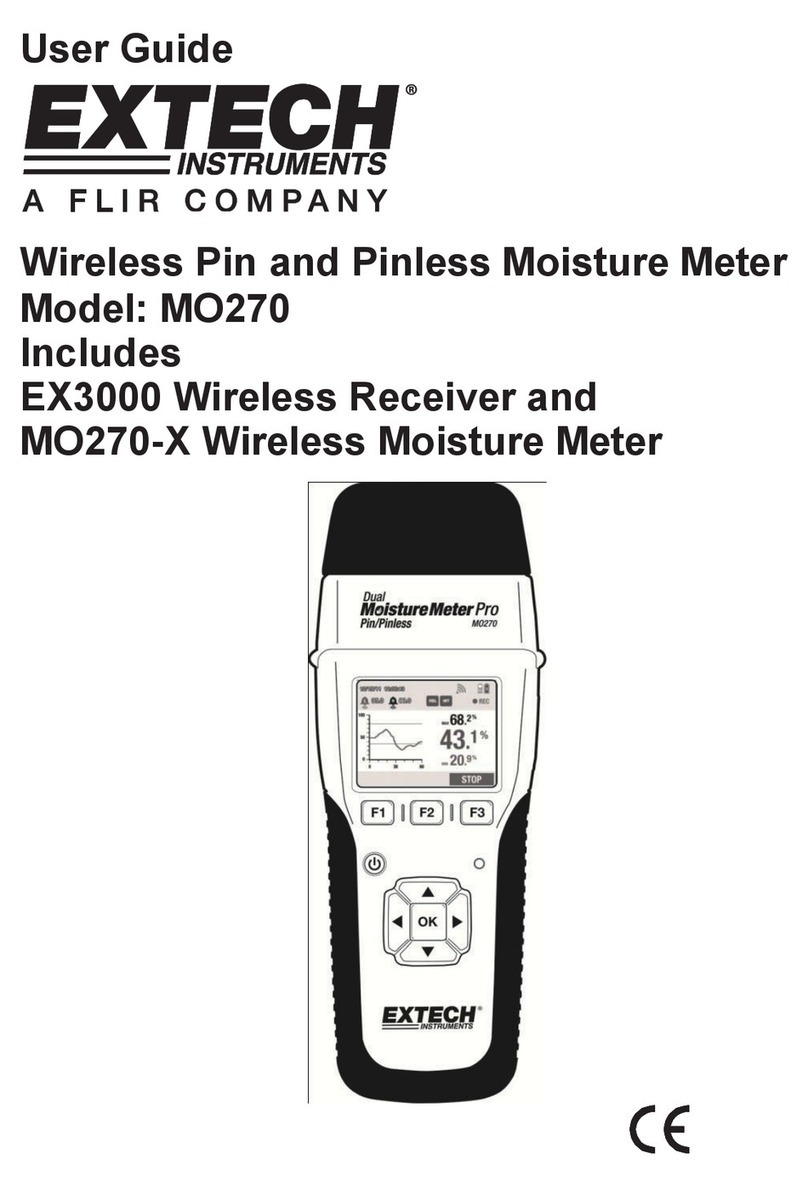
Extech Instruments
Extech Instruments MO270 user guide

Soilmoisture Equipment
Soilmoisture Equipment 6085 Handi-TRASE quick start guide
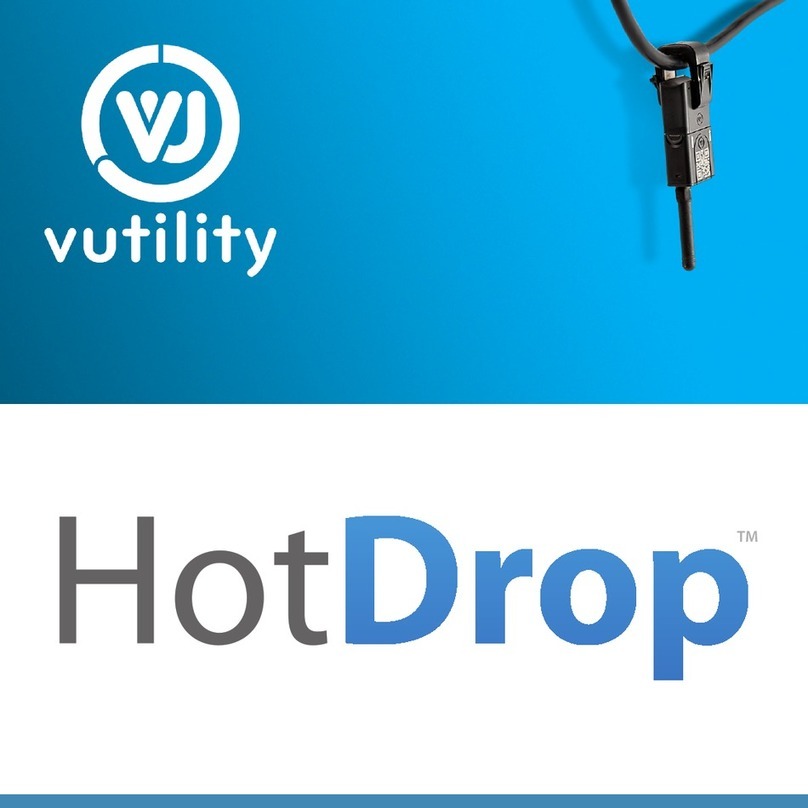
Vutility
Vutility HotDrop installation guide
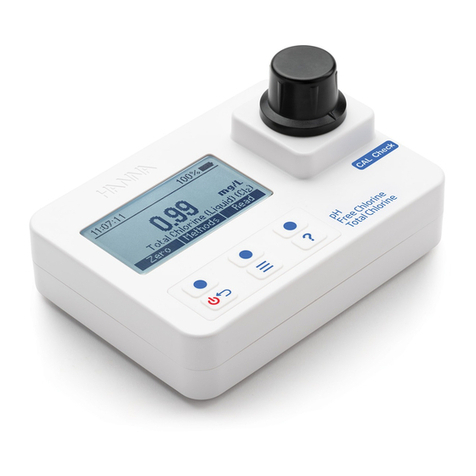
Hanna Instruments
Hanna Instruments HI97710 instruction manual
